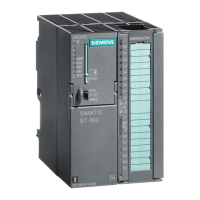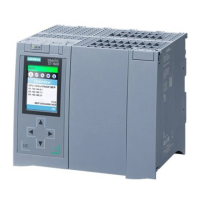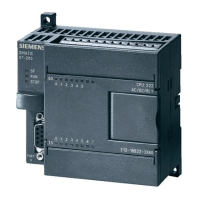CP as PROFINET IO controller
6.2 IO controller mode with S7-300
Configuring and commissioning S7 CPs for Industrial Ethernet
118 Configuration Manual, 09/2013, C79000-G8976-C182-13
Reading and writing data records with program block PNIO_RW_REC
When the CP is acting as PROFINET IO controller, acyclic data exchange is supported by
writing and reading data records with the program block PNIO_RW_REC (FB52).
FB52 supports both functions "write data record" and "Read data record". It can, however,
only be used for data transfer in one direction at any one time, either for "read data record"
or "write data record".
Alarm evaluation with program block PNIO_Alarm
Using the function block PNIO_Alarm (FB54), you can acquire, evaluate and acknowledge
PROFINET IO alarms in the user program of the controller CPU.
As long as FB54 is not called in the user program, all alarms are acknowledged internally by
the CP in the role of PROFINET IO controller. you will not receive any further information on
the alarms.
With certain alarms, you can use PNIO_Alarm to obtain additional information such as the
alarm type or the module address.
These include, for example:
● Removing/inserting alarms
● Alarms generated on return of a station that are mapped to the IOPS or IOCS bit arrays in
the program blocks PNIO_SEND and PNIO_RECV.
All other PROFINET IO process alarms and diagnostics alarms can also be evaluated with
PNIO_Alarm.
Note
Call sequence for PNIO_Alarm
If PNIO_Alarm has been called (at least) once in the user program, it must continue to be
called to ackn
owledge pending alarms. Alarms are pending when PNIO_RECV signals a
value not equal to "0" in the ADD_INFO parameter.
If PNIO_Alarm is no longer called after it has been called once or more in the user program,
alarms are not acknowledged. There is then no
guarantee that the IO image will be updated
correctly. The can occur, for example, following a station return alarm.
The need for continued calling of PNIO_Alarm remains until the next restart on the module.

